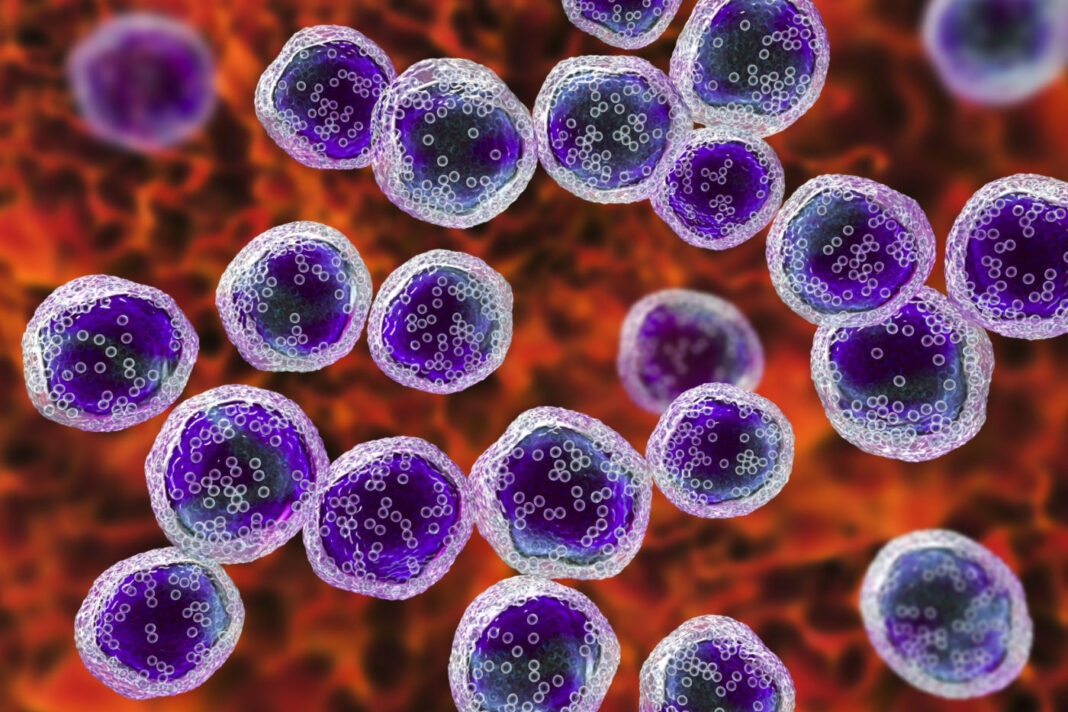Cancer’s ability to resist chemotherapy has been a roadblock to achieving lasting remissions or cures. Scientists have believed that unique genetic mutations in tumors may be to blame for drug resistance. However, they are starting to look at nongenetic changes in cancer cells to explain their adaptability. An example of this is cancer’s ability to change its identity. A prostate cancer cell that is sensitive to hormone-blocking therapy might change into a cell type that does not require the hormone for its growth. This heterogeneity creates obstacles for treatment, since a single drug is unlikely to work against so many different cell types.
Now, a team of researchers at the Sloan Kettering Institute (SKI), the Koch Institute for Integrative Cancer Research at MIT, and the Klarman Cell Observatory at the Broad Institute have discovered that this tumor heterogeneity can be traced back to a common source: a particularly flexible cell state that is characteristic of a subset of cells in a tumor and can generate many other diverse cell types.
Their study, “Emergence of a High-Plasticity Cell State during Lung Cancer Evolution,” is published in Cancer Cell and led by Tuomas Tammela, MD, PhD, an assistant member in the cancer biology and genetics program at SKI.
“The high-plasticity cell state is the starting point for much of the heterogeneity we see in tumors,” stated Tammela. “It’s kind of like a busy intersection of many roads: Wherever a cell wants to end up identity-wise, it has to go through this cell state.”
“Tumor evolution from a single cell into a malignant, heterogeneous tissue remains poorly understood. Here, we profile single-cell transcriptomes of genetically engineered mouse lung tumors at seven stages, from pre-neoplastic hyperplasia to adenocarcinoma,” the researchers wrote.
“This highly plastic cell state is something completely new,” stated Jason Chan, MD, PhD, a physician-scientist doing a fellowship in the Tammela lab and one of the paper’s lead authors. “When we saw it, we didn’t know what it was because it was so different. It didn’t look like normal lung cells where the cancer came from, and it didn’t really look like lung cancer either. It had features of embryonic germ layer stem cells, cartilage stem cells, and even kidney cells, all mixed together.”
The researchers observed these cells in every tumor they examined and identified these highly plastic cells by single cell RNA sequencing (scRNA-Seq). By performing scRNA-Seq on tumors as they grew over time, the researchers were able to observe when and how different cell types emerged over the course of a tumor’s evolution. From these data, the researchers were able to create a kind of map of which cells came from which other cells.
“The map contains major highways and little dirt roads,” Tammela explained. “The high-plasticity cell state that we identified sits right in the middle of the map. It has a lot of paths coming in, and it has even more paths coming out.”
This high-plasticity cell state emerged consistently in a tumor’s evolution and persisted throughout its growth.
Stem cells play important roles in embryonic development and in tissue repair. Many scientists think that cancers arise from specific cancer stem cells. But Tammela and colleagues do not think these high-plasticity cells are stem cells. Unlike stem cells, the cells are not present at the very beginning of a tumor’s growth, and emerge later.
“When we compare the gene expression signature of these highly plastic cells to normal stem cells or known cancer stem cells, the signatures don’t match at all. They look completely different,” he said.
“Cancer cells progressively adopt alternate lineage identities, computationally predicted to be mediated through a common transitional, high-plasticity cell state (HPCS). Accordingly, HPCS cells prospectively isolated from mouse tumors and human patient-derived xenografts display high capacity for differentiation and proliferation. The HPCS program is associated with poor survival across human cancers and demonstrates chemoresistance in mice. Our study reveals a central principle underpinning intra-tumoral heterogeneity and motivates therapeutic targeting of the HPCS,” noted the researchers.
“Our model could explain why certain cancer cells are resistant to therapy and don’t have a genetic basis for that resistance that we can identify,” Chan stated.
Chan also explained it is not all the cells in the tumor that are adapting, but a subset of the cancer cells that are just more malleable.
The researchers believe it may be possible to avert the emergence of resistance and provide lasting remission by combining chemotherapy drugs with new medications that target these highly plastic cells.






